Bees are essential to the functioning of Americas titanic almond industry and billions are dying in the process
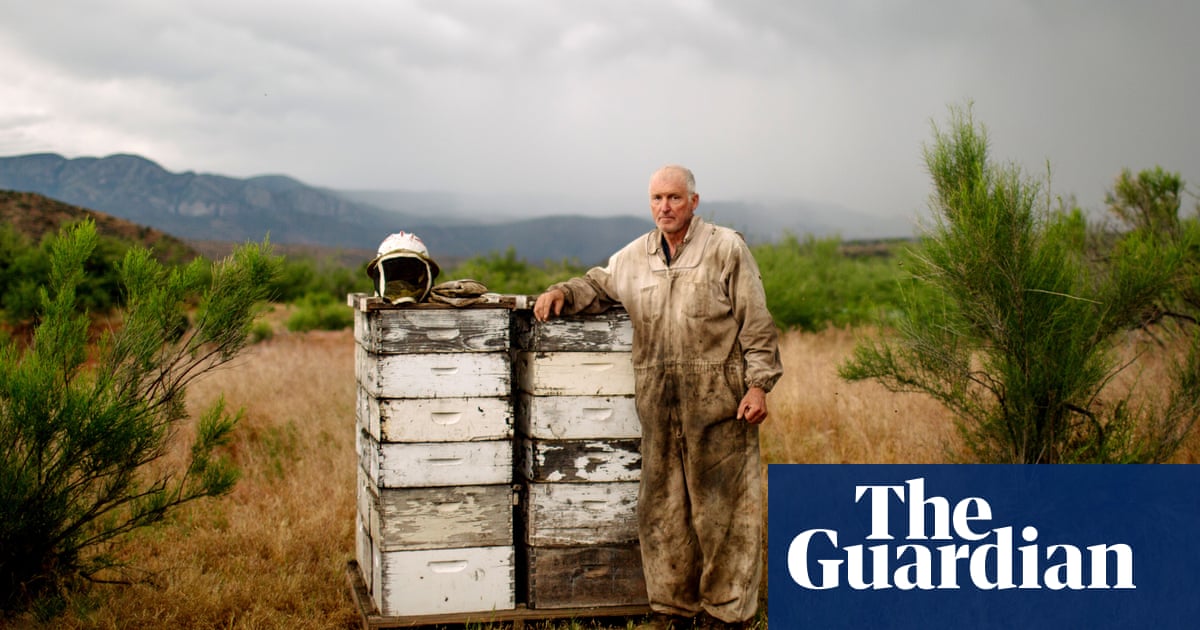
Dennis Arp was feeling optimistic last summer, which is unusual for a beekeeper these days.
Thanks to a record wet spring, his hundreds of hives, scattered across the central Arizona desert, produced a bounty of honey. Arp would have plenty to sell in stores, but more importantly, the bumper harvest would strengthen his bees for their biggest task of the coming year.
Like most commercial beekeepers in the US, at least half of Arps revenue now comes from pollinating almonds. Selling honey is far less lucrative then renting out his colonies to mega-farms in Californias fertile Central Valley, home to 80% of the worlds almond supply.
But as winter approached, with Arp just months away from taking his hives to California, his bees started getting sick. By October, 150 of Arps hives had been wiped out by mites, 12% of his inventory in just a few months. My yard is currently filled with stacks of empty bee boxes that used to contain healthy hives, he says.
This shouldnt be happening to someone like Arp, a beekeeper with decades of experience. But his story is not unique. Commercial beekeepers who send their hives to the almond farms are seeing their bees die in record numbers, and nothing they do seems to stop the decline.
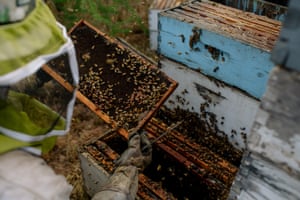
A recent survey of commercial beekeepers showed that 50 billion bees more than seven times the worlds human population were wiped out in a few months during winter 2018-19. This is more than one-third of commercial US bee colonies, the highest number since the annual survey started in the mid-2000s.
Beekeepers attributed the high mortality rate to pesticide exposure, diseases from parasites and habitat loss. However, environmentalists and organic beekeepers maintain that the real culprit is something more systemic: Americas reliance on industrial agriculture methods, especially those used by the almond industry, which demands a large-scale mechanization of one of natures most delicate natural processes.
Honeybees thrive in a biodiverse landscape. But Californias almond industry places them in a monoculture where growers expect the bees to be predictably productive year after year.
Commercial honeybees are considered livestock by the US Department of Agriculture because of the creatures vital role in food production. But no other class of livestock comes close to the scorched-earth circumstances that commercial honeybees face. More bees die every year in the US than all other fish and animals raised for slaughter combined.
The high mortality rate creates a sad business model for beekeepers, says Nate Donley, a senior scientist for the Center for Biological Diversity. Its like sending the bees to war. Many dont come back.
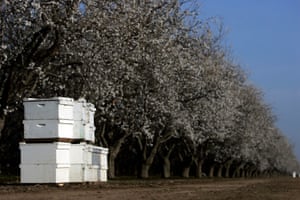
Nuts for almonds
Californias $11bn (8.4bn) almond industry has grown at an extraordinary rate. In 2000, almond orchards occupied 500,000 acres. By 2018 that had more than doubled almond groves in the Central Valley now blanket an area the size of Delaware, producing 2.3bn lb (1m tonnes) of almonds annually sold around the world.
The average American eats 2lb (900g) of almonds every year, more than in any other country. US almond milk sales have grown 250% over the past five years to reach $1.2bn, over four times that of any other plant-based milk, according to a 2018 Nielsen report.
We dont see a cap on growth at this point, especially with the incredible versatility of almonds in foods, says Richard Waycott, president and CEO of the Almond Board of California, a not-for-profit advocacy organization representing the majority of farmers.
But these enormous orchards cant function without bees.
It wasnt that long ago that beekeeping was mostly a boutique pursuit of the gentleman apiarist. When European immigrants introduced their own version of agriculture to North America, they also imported the art of beekeeping, along with boxes of Apis mellifera, the domesticated European honeybee.
During the 19th and early 20th centuries, beekeepers earned a modest living selling beeswax and honey. But in the late 20th century there was a titanic shift, exemplified by the career of Dennis Arp.
Arp, 67, got into beekeeping nearly four decades ago when he established his Mountain Top Honey company in Flagstaff, Arizona. A commanding presence with biceps toned from hoisting heavy bee boxes, Arp is the sort of diligent beekeeper who spends his days driving between apiary sites, and his nights studying online forums, reading articles on the latest mite treatment.
When cheap imported honey began cutting into Arps profits in the 1980s, he decided to send some of his hives with a beekeeper friend to pollinate almonds in California. A decade later he struck up a deal of his own with an almond grower in Californias Kern county. With that strategic move, Arp joined the growing ranks of migratory beekeepers in the US who still sell honey but mostly travel the country from one pollination site to the next with stacks of bee boxes in tow.
In the early 1980s, when Arp was just selling honey, he would lose about 5% of his hives per year to disease or weather conditions. Around 2000, Arps bees started dying in greater numbers.
First, he experienced a nearly 100% loss of his hives from an infestation of tracheal mites. Then he had to cope with the intrusion of Africanized killer bees. And finally, what he still considers the bane of his business, a parasitic mite called Varroa destructor literally sucked the life out of his bees. The mite feeds on the bees plump body, destroying the insects immune system and other vital functions. If Arp doesnt apply regular chemical treatments for the mites, his colonies will die.
Now Arp finds himself in a vicious circle: he is constantly battling to keep enough bees alive to meet the requirements of his almond contract. But if he was not pollinating almonds, maybe his bees would be healthier.
This year Arps bees, like more than two-thirds of the United States commercial honeybee population, will spend February in the toxic chemical soup of Californias Central Valley, fertilizing almonds one blossom at a time.
Pesticides are used for all kinds of crops across the state, but the almond, at 35m lb a year, is doused with greater absolute quantities than any other. One of the most widely applied pesticides is the herbicide glyphosate (AKA Roundup), which is a staple of large-scale almond growers and has been shown to be lethal to bees as well as cause cancer in humans.
On top of the threat of pesticides, almond pollination is uniquely demanding for bees because colonies are aroused from winter dormancy about one to two months earlier than is natural. The sheer quantity of hives required far exceeds that of other crops apples, Americas second-largest pollination crop, use only one-tenth the number of bees. And the bees are concentrated in one geographic region at the same time, exponentially increasing the risk of spreading sickness.

Bees are exposed to all kinds of diseases in California, says Arp. There can be hundreds of thousands of hives from multiple beekeepers in one staging area. It is like letting your bees go into a singles bar and then they have unprotected sex.
The almond business has been good to Arp last February, for instance, he installed 1,500 of his hives in one growers orchard at $200 per hive so he is reluctant to make a direct connection between the constant health challenges with his bees and the time spent every spring in the almond groves. The bees like working on the almonds, says Arp. But it obviously exposes them to risks.
Now he routinely loses 30% or more of his bees a year, mirroring national statistics. In any other industry, the death of a third of your workforce would cause an international outcry but this staggering loss is now considered the normal cost of doing business.
The bees in the almond groves are being exploited and disrespected, says Patrick Pynes, an organic beekeeper who teaches environmental studies at Northern Arizona University in Flagstaff. They are in severe decline because our human relationship to them has become so destructive.
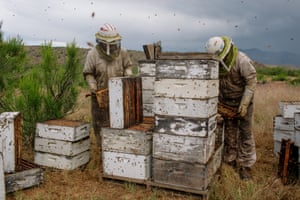
The high price of growth
When the phenomenon called colony collapse disorder was first identified in 2006, after a record number of honeybees mysteriously disappeared or died outside their hives, it was linked to a variety of factors including loss of habitat and climate change. But the primary culprit was pesticides. Researchers found that a class of pesticides called neonicotinoids was especially lethal to bees.
Last May, the EPA pulled a dozen neonics from the market following a successful lawsuit brought by beekeepers and environmental groups.
But there are many chemicals that are not labeled as bee toxic, even though they can make bees sick and weaken their immune systems. While bees may survive the pollination season, they may not last the winter or may take back substances that gradually poison the entire colony.
Those on the almond growers side acknowledge there is a huge problem. The bee mortality rate is too high and is unacceptable, says the entomologist Bob Curtis, a pollination consultant for the Almond Board of California. It is only because of the hard work and creativity of beekeepers that [almond growers] have gotten the bees they need.
The almond boards best practice guidelines encourage beekeepers to spend as little time in Californias Central Valley as possible. Honeybees can travel up to three miles in search of varied forage, so even if the almond grower is doing everything right to protect a pollination investment, the cotton or grape farmer down the road may be spraying bee-toxic chemicals on crops.
Even as almond production has steadily ramped up for decades, the number of commercial hives in the US has remained at a steady 2.7m colonies since the early 2000s. With all the challenges beekeepers face, just maintaining the bare minimum is a struggle.
One coping strategy pursued by the almond industry has been to develop genetically modified almond varieties that require only one hive per acre to pollinate, instead of two. And last January, a pollinator protection law went into effect in California as part of the states Bee Where initiative. For this program, beekeepers are required to register the location of their hives with the countys agricultural commissioner and farmers must notify the commissioner in advance of any plans to spray pesticides.
Even so, the costs beekeepers incur trying to keep their bees alive are constantly rising. Arp has spent approximately $50,000 in the past year buying new hives to compensate for the 35% colony loss he experienced last year. He also spends at least $50,000 a year on mite treatments, not to mention other more aggressive measures the industry is taking just to maintain the status quo.These include splitting robust hives in half, introducing mail-order queens to new hives and fattening bees on corn syrup or on simulated pollen substances called pollen patties.
Experts say that simply working around the pesticide problem isnt enough and that farming itself must be changed from the ground up.
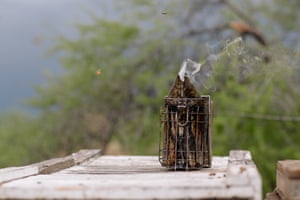
The search for a solution
Hope is being found in a new certification program that, similar to organic or free trade labels, will help consumers choose products that have been made with bee-friendly methods.
The Bee Better certification program, launched in 2017 by the not-for-profit Xerces Society, introduces biodiversity into almond groves to naturally control pests and nourish honey bees. Xerces is working with almond growers to plant California wildflowers, mustard and clover in between the rows of trees and native flowering hedges along the perimeter of the orchard a kind of eco-friendly fence to keep bees in the orchard.
The program scored a victory when Hagen-Dazs ice cream became the first food company to carry products with the Bee Better seal. The companys bee-friendly vanilla milk chocolate almond bar was rolled out in December at Costco, Sams Club and BJs Wholesale Club, with three more bee-friendly almond ice cream flavors to be available in early 2020.
Letting nature take its course is nothing new for 81-year old Glenn Anderson. He is the first and still one of the few organic almond growers in Californias San Joaquin Valley. His 40-year-old orchard is small just 20 acres and has always been chemical free.
We dont have pests; we have biodiversity, says Anderson, who primarily sells directly to individual customers through his Anderson Almonds company. Unlike large industrial almond farms that strip the orchard ground bare to more efficiently treat for insects and fungi, Anderson allows a rich understory to grow, which naturally nourishes the soil and strengthens the trees.
Anderson hires a beekeeper hobbyist from northern California every spring to install about 20 hives in his orchard. We have the opposite of colony collapse at my farm, says Anderson. My beekeeper brings weak hives down that he wants to recharge on my property.
Anderson says the tradeoff for not using pesticides is that his annual crop yield is lower typically about 10,000 pounds and he keeps his orchard small in order to manage its wildness. Im averse to an expansion model, he says. It doesnt suit me much.
And as for industrial-grown almonds? They taste like cardboard, he says.
Back in Arizona, Dennis Arp and his son Adam are just trying to make it through the next few months with as many healthy bees as possible.
There are days when the costs seem overwhelming, and Arp wonders if he should hang up his honey-stained bee suit. But beekeeping is what he knows best, and he wants to pass the business on to his son.
I dont know how we will pull it off yet, he says. But we will make it work.
Read more: https://www.theguardian.com/environment/2020/jan/07/honeybees-deaths-almonds-hives-aoe

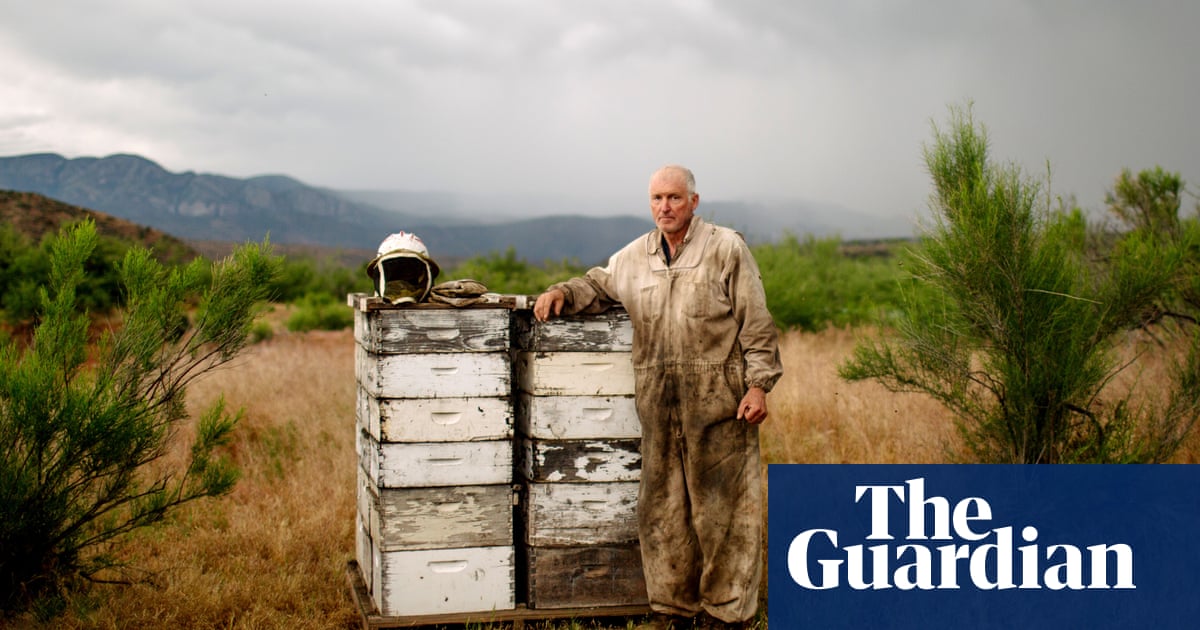
Recent Comments